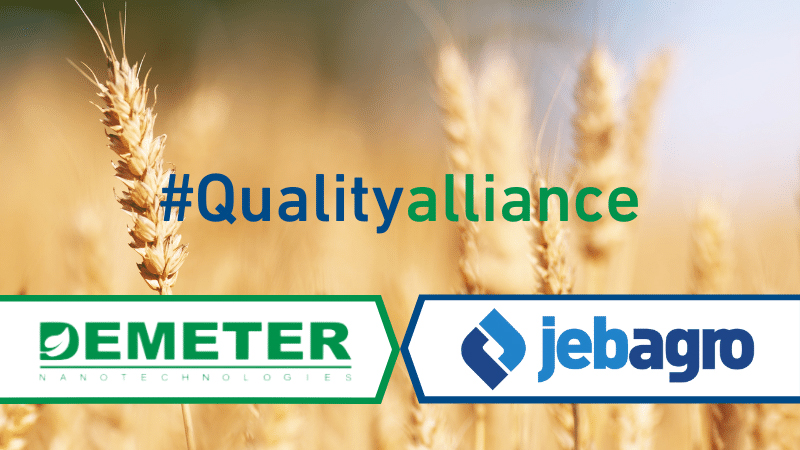Covering the Basics: Seed Treatments Expected to Continue to Boom
This year agriculture has seen a variety of disruptions. Despite chaotic weather, COVID-19, an incomplete Phase One deal with China, and supply chain disruptions, seed treatments remained remarkably unscathed for the 2020 growing season.
“It’s been a very strange year. We were gearing up for treatment in a lot of places when COVID hit, at least in the U.S. and earlier than that in Europe and other places,” says Ross Weikel, Syngenta’s Head of Seedcare in North America. “Spring, in the northern hemisphere is a heavy seed treatment application period. And to have the virus hit during that time created a lot of questions. But, I think, a huge compliment to the resiliency of agriculture — all those treatments still happened.”
According to a report from Data Bridge Market Research, the seed treatment biofertilizers market is estimated to reach at a CAGR of 15.8% in the forecast period 2020 to 2027. Growth, according to the report, is driven primarily by the increasing organic farmland and rising acceptance of biofertilizers among farmers.
New Technology
One thing that has helped make seed treatments more popular is the technology supporting them.
“We’ve seen some more technology around the internet of things,” Weikel says. “It used to be you’d mix your seed treatment — anything you could get on the seed — and you really weren’t sure how accurate it was. Now with improved treatment equipment, if you have a high-performing pre-mix product, and you have really good equipment, you can be very certain of the accuracy and know you’ve got a good loading on every seed.”
While seed treatments have been around for decades, there is still much to learn. New solutions that allow for lower treatment rates give growers more space on the seed itself.
Wilbur-Ellis recently announced the release of a new and improved seed treatment product, STEPUP 2.0., a seed treatment nutritional that is specifically designed to interact with and respond to the seed by supplementing the protein and amino acids released during the early stages of germination, providing a faster and more uniform emergence, resulting in higher yields. This product features a newly redesigned, higher-concentrated formulation, the company says.
“The redesigned formulation allows for lower use rates on seed which can result in better seed flow at planting while retaining its performance,” said Wilbur-Ellis’ National Seed Treatment Manager Paul Johnson.
Looking Ahead
With the 2020 seed treatment season behind us, growers must start thinking about 2021.
“Often the seed treatment decision is made alongside the seed choice,” Weikel says. “Usually the seed sales season starts as early as August. Generally, 80%-90% of seed treatment decisions are done before the end of the year. Not all the treating is done, but the decisions are made. Then you have the indecision about acre shifts that happen at the end. We’re (the U.S.) heading into what is the big push for seed treatment for next year. A lot of those things will be done over the next three or four months.
“There’s a lot of uncertainty. It would be surprising if there was less commitment in Q4 than is normal at a grower level.”
Biologicals
“In the last 10 years, more biological products are included in that mix,” Weikel says. “People are finding biologicals in different areas can provide some stimulation and/or a way to attack some of those pests using a different mode of action.”
While the push for biological pesticides has been consumer and regulatory driven, that doesn’t seem to be the case for seed treatment.
“Most of the drive for biologicals in seed treatments is actually just been about looking for new solutions,” Weikel says. “It’s been less consumer driven and less regulatory driven — particularly in the U.S. In Europe, there’s more of a regulatory direction towards biologicals. The vast majority of biologicals on the market sold as seed treatments today are either nematicides or are biostimulants. Those are areas where 10 years ago there weren’t a lot of options.”
Verdesian’s Kurt Seevers, sees added benefits to the use of biological seed treatments.
“As growers start looking for ways to add the next two to five to 10 bushels (corn or soybeans) there’s potential to help us add yield to what we’re already getting through genetics, fertilizer use, and efficiency,” says Seevers, Technical Development Manager for Seed Treatments and Inoculants. “With biologicals, we’re taking things that are more natural and looking for ways that we can capitalize on what these naturally occurring things can do.”
“People are looking for the next new thing,” Seevers says. “We’re looking for environmental reasons, curiosity, income opportunities — driven by an interest in sustainability. In the biological realm, there’s a much easier line to be drawn from biological to sustainability.”






